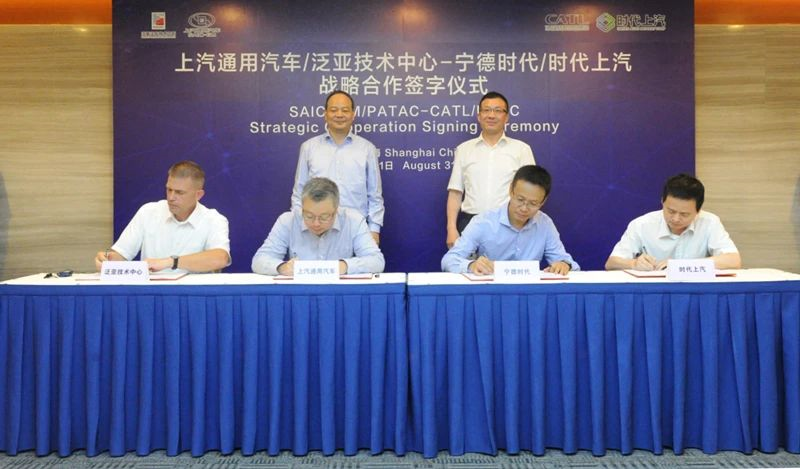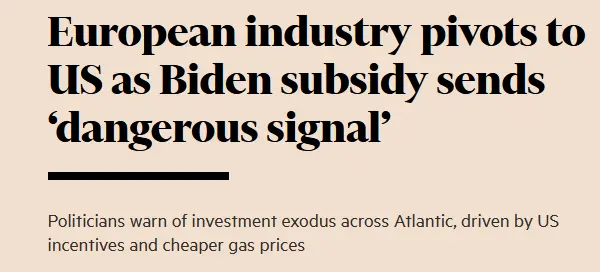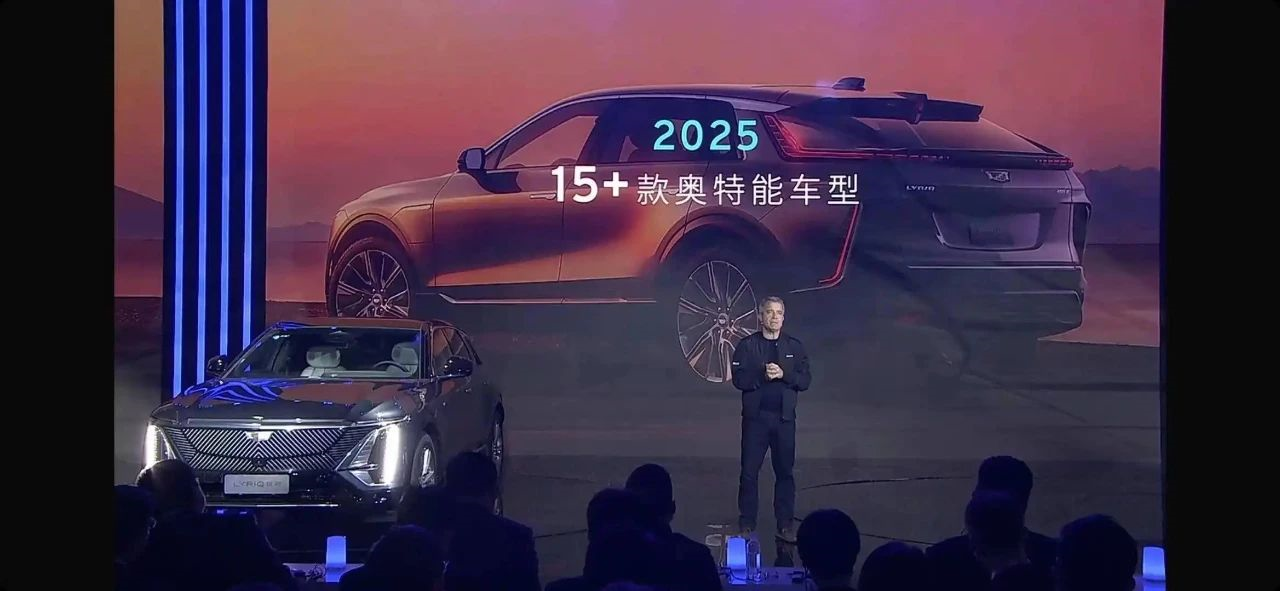Author: Feng Jingang
On November 22, 2022, General Motors’ Tech Day was held in Shanghai. During the press conference, GM China President Paolo Bacchi announced that “GM will introduce over 15 Ultium EV models to the Chinese market by the end of 2025. By then, GM’s EV annual capacity in China will exceed 1 million vehicles, covering mainstream and luxury models.”
Many people may not know that General Motors was actually one of the first foreign car companies to promote new energy vehicles in the domestic market (Shanghai GM launched the Sail EV concept car in 2011). However, like other foreign car companies, GM previously maintained a wait-and-see attitude. With the introduction of the Ultium pure electric platform last year, GM officially entered the domestic new energy vehicle market.
The sales target of 1 million vehicles indicates that GM is now preparing for a major battle rather than just testing the waters. In order to win this critical war for the future, GM has made sufficient preparations, such as breaking its dependence on LG Energy’s batteries and introducing a brand new and more reliable battery partner – CATL.
As a global leader in power batteries, CATL’s strength is beyond doubt, and it will undoubtedly become an important driving force for GM’s transformation. Similarly, under GM’s grand vision, CATL’s battery installation volume will also reach a new level. In addition, although it has not yet entered the US market, CATL has already successfully won three major American electric car manufacturers, Tesla, GM and Ford, which lays a solid foundation for future penetration into the US market.
GM’s “New Lover”
At the end of 2010 Detroit Auto Show, GM launched the famous Chevrolet Volt hybrid car, and the power battery carried by the car came from LG Energy (then known as LG Chem). From that time on, GM and LG Energy began to establish a cooperative relationship, which later became an in-depth partnership, similar to the relationship between Tesla and Panasonic. Even when GM later tried the domestic new energy vehicle market, it insisted on using LG Energy’s power battery.
Although GM and LG Energy have established a profound relationship, their partnership in recent years can hardly be considered successful.
In the United States, besides Tesla, GM can be said to be a staunch promoter of electrification, and has successively launched star models such as EV1, Volt and Bolt, of which the latter two use LG Energy’s batteries. However, the results all resulted in discontinued production. There were also a series of spontaneous combustion incidents with the Bolt and its derivative models, shocking the global electric vehicle industry, and LG Energy paid hundreds of billions of yuan to GM as compensation.Although LG Energy can compensate for the loss caused by spontaneous combustion, General Motors (GM) still has to bear the responsibility for the suspension of production and the damage to its reputation. Every mistake involves a strategic cost. The transformation of GM is difficult, and the battery problem cannot be easily solved.
In August 2021, following a massive recall and huge losses, CEO Mary Barra said that the company will continue to cooperate with its battery supplier, LG Energy. In August this year, foreign media reported that General Motors and LG Energy will jointly build the fourth battery factory. Considering their unsuccessful cooperation in the past, this cooperation has puzzled the outside world. Is it because of the compensation agreement that the two companies have maintained their cooperative relationship?
From GM’s perspective, their decision is understandable. At that time, only Panasonic and LG Energy had the ability to mass-produce batteries in the US market. Panasonic had already partnered with Tesla, so there was no other choice but LG Energy, especially considering the previous cooperative background.
Although GM and LG Energy are bound in the US market, this helplessness does not apply to the Chinese market, because eight out of the top ten global battery manufacturers are basically in China. Of course, there are not many batteries that can meet GM’s high technical standards and high production capacity requirements. As a result, GM chose CATL, which was within expectations.
Regarding the cooperation between GM and CATL, few outside sources know about it. They thought that the two parties were still in negotiations. In fact, their cooperation had already started.
It was reported that SAIC-GM had signed a strategic cooperation agreement with CATL in Shanghai as early as September 2018. The agreement indicated that the two sides will actively explore the field of automotive battery technology in the future, and conduct in-depth cooperation on the development of SAIC-GM’s next-generation new energy vehicle batteries, injecting new power into SAIC-GM’s new energy strategy and further promoting the rapid development of the company’s new energy vehicle models.
On June 4, 2020, Barra revealed that they were cooperating with local Chinese suppliers, such as CATL, to accelerate the landing of the third-generation global electric vehicle platform in China, which is of great importance to their globalization strategy. Barra explained to the media that “choosing the right suppliers and the right R&D methods is the key to providing suitable electric vehicle products for Chinese consumers.”
 Currently, CATL (Contemporary Amperex Technology) batteries have been successfully installed in General Motors’ brands, including Buick VELITE6, Cadillac LYRIQ, the first Altair-powered vehicle model, and the upcoming Buick Electra-X production version.
Currently, CATL (Contemporary Amperex Technology) batteries have been successfully installed in General Motors’ brands, including Buick VELITE6, Cadillac LYRIQ, the first Altair-powered vehicle model, and the upcoming Buick Electra-X production version.
Recently, the Electra-X production version landed in the Ministry of Industry and Information Technology. The manufacturer of its individual battery cells is SAIC CATL Power Battery Co., Ltd., which is a joint venture between CATL and SAIC (Shanghai Automotive Industry Corporation), with CATL holding 51% and SAIC holding 49%.
According to the plan, SAIC-GM will launch 15 Altair-powered vehicle models before 2025. Judging from the several Altair-powered vehicle models disclosed by SAIC-GM, CATL has been behind the scenes, while LG Energy has disappeared. If the reason Japanese and Korean batteries were restricted in domestic development in previous years was due to battery whitelisting, why can’t they rise now that these limitations have disappeared?
Ultimately, whether it is the correctness of the technical route or the advantages of cost, Japanese and Korean batteries have been outperformed by domestic batteries.
Of course, we also noticed that although the competitiveness of Japanese and Korean batteries has been increasingly weakened in the domestic market, they still have a certain voice in other markets around the world, which is not because of their stronger competitiveness, but more because of their earlier internationalization and deeper layout. In the future, with the increasing number of Chinese power battery manufacturers venturing abroad, the market will inevitably face reshuffling.
The United States Needs CATL
As the competition in the domestic power battery market has entered the white-hot stage, and the competition pattern has begun to take shape, in recent years, many domestic battery manufacturers have started to try to expand overseas. This trend is driven by both strategic initiatives and market demand, such as the North American market.
As analyzed earlier, one of the real constraints on General Motors’ ability to choose other battery suppliers in the US market besides LG Energy is that there are no better options. Therefore, if CATL builds a factory in North America, will General Motors still rely solely on LG Energy? The answer is not difficult to guess.
In addition to General Motors, Tesla and Ford are also eagerly anticipating CATL’s batteries.
Currently, most of Tesla’s battery supply in China has already switched to CATL, illustrating the importance of CATL’s batteries in Tesla’s product competitiveness. For example, the success of the domestically produced Model 3, which was priced at around RMB 200,000, was essential thanks to CATL’s supply of lithium iron phosphate batteries.
In August 2021, Musk tweeted that he likes lithium iron phosphate batteries, and CATL is the only supplier of Tesla’s lithium iron phosphate batteries, which is basically implied. As a response, CATL also posted a screenshot of Musk’s tweet on Weibo.
According to media reports, Tesla has sent emails to its car owners, mentioning that “if car owners want to use CATL’s lithium iron phosphate batteries, they can also choose. Such models are already available in stock.” According to Tesla’s current production arrangement, these models using CATL’s lithium iron phosphate batteries are produced in Tesla’s Shanghai factory.
All kinds of clues indicate that the American market needs CATL. With such understanding and market demand, CATL cannot fail to understand it.
Earlier this year, there were rumors that CATL would build a factory in North America, with a planned investment of $5 billion and a capacity of 80GWh. Later, at a small-scale investor communication meeting, CATL’s chairman, Zeng Yuqun, responded to the “Factory in the United States” question, saying that “CATL must enter the US market.” This rumor was confirmed with a reply.
On July 21st of this year, CATL and Ford signed a memorandum of understanding for cooperation, opening the door for cooperation between the two parties. According to the cooperation agreement, the two parties will establish a global strategic cooperation relationship, and the cooperation scope covers power battery supply in China, Europe, and North America. Starting from next year, CATL will also supply lithium iron phosphate battery packs for Ford’s Mustang Mach-E models in North America. From early 2024, CATL will supply lithium iron phosphate battery packs for Ford’s pure electric pickup truck F-150 Lightning in North America.
At the Ford Mustang electric car communication meeting, Ford officials confirmed to the journalist of “Electric Power Trend” that the domestically produced Mach-E has already used CATL batteries.
The cooperation with Ford is CATL’s first “order from the United States” since starting its US strategy, and its significance is extraordinary. This also means that CATL has entered the battery supply chains of Tesla, GM, and Ford, completing the “American car puzzle.”For CATL, although the United States offers broad prospects, it is not an easy task to win this hot market. In August of this year, the United States passed the Inflation Reduction Act, which requires that key minerals in batteries come proportionally from the United States and allied countries. Otherwise, electric vehicles using such batteries will not be eligible for subsidies. Europe, Japan, and South Korea have expressed serious objections to this law.

So, how will CATL, a Chinese power battery enterprise, respond? According to Zeng Yuqun’s specific attitude, the American market is a must-win for CATL, but the sudden appearance of IRA disrupted the original pace. Of course, from a macro perspective, the impact of IRA is global. The good news is that CATL has already won the three major American auto brands in the Chinese market, which lays a solid foundation for its future entry into the US market.
This article is a translation by ChatGPT of a Chinese report from 42HOW. If you have any questions about it, please email bd@42how.com.
